State of the Sport: Vintage RC Aerobatics
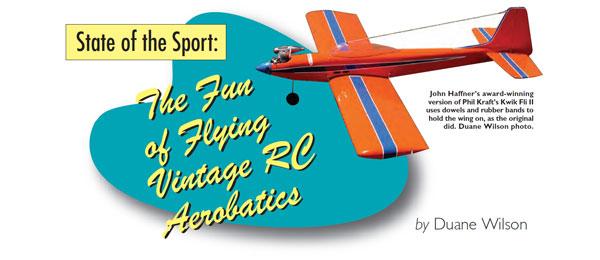
State of the Sport: Vintage RC Aerobatics
An AMA specialty group finds its place in history
By Duane Wilson
As seen in the May 2006 issue of Model Aviation.
ONE DEFINITION OF the word “vintage” is something “… characterized by excellence and lasting popularity … representative of the best.” Two of the many SIGs that are sanctioned by AMA devote themselves to the history of radio-control aeromodeling and preserve its best for a new generation of modelers to enjoy.
Although the history of RC can be traced back further, for practical purposes it begins with the introduction of radios manufactured in the late 1950s and early 1960s. The same way we listen to “solid gold” radio stations to hear the best songs of the 1960s and 1970s, these SIGs have rediscovered the “golden oldies” of RC to enjoy again. It is no accident that certain designs have become “classics”; they have staying power and are still great looking and superior-flying airplanes.
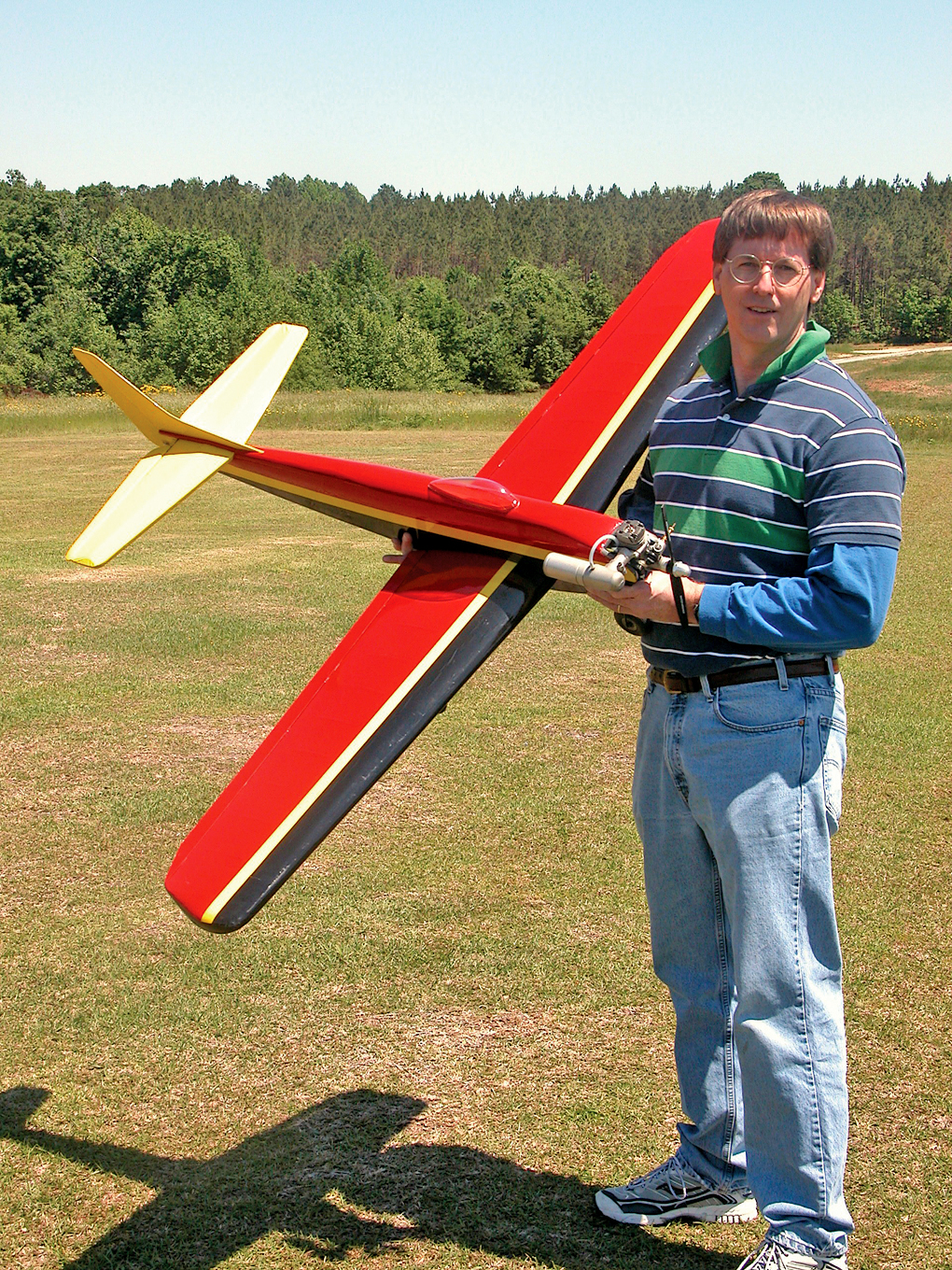
John Haffner’s award-winning version of Phil Kraft’s Kwik Fli II uses dowels and rubber bands to hold the wing on, as the original did. Duane Wilson photo.
Although the Vintage Radio Control Society (VR/CS) and the Senior Pattern Association (SPA) promote the history of RC and the standout models produced during that period, the central focus and purpose of each organization is different. The VR/CS seeks to preserve the best of RC’s past in its entirety and the SPA seeks to recapture the original spirit of early RC Aerobatics (Pattern) competition.
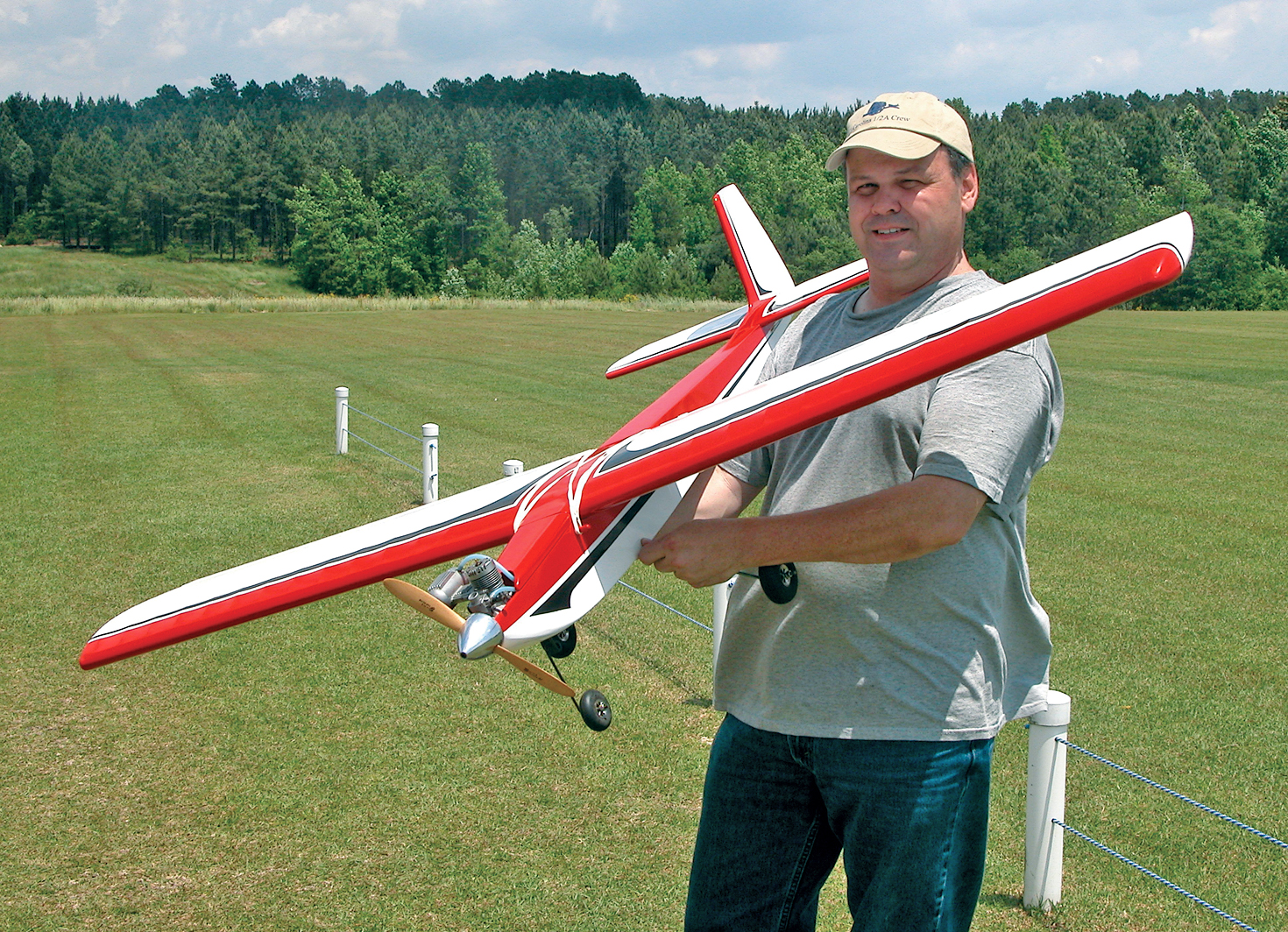
Many are probably familiar with the Sr. Falcon; this one is by Bob Harris of Early RC Models. Wilson photo.
Although the emphasis of each SIG is different, they are similar in several important ways. Each group has different beginning and cutoff dates for “legal” aircraft. VR/CS designs go back to the beginning of RC—until January 1, 1970—and SPA-legal models date from roughly 1960 to January 1, 1976.
My father became interested in RC in 1963, when we moved to an area near the former site of the RCCD (Radio Control Club of Detroit)—a group that was at the forefront of the growing RC Pattern movement of the early 1960s. Tom Brett, the 1962 World Champion, had won the World Championships in England the year before with his Perigee design (which now hangs in the AMA museum. He was a member of the RCCD and a tremendous hero figure to me.
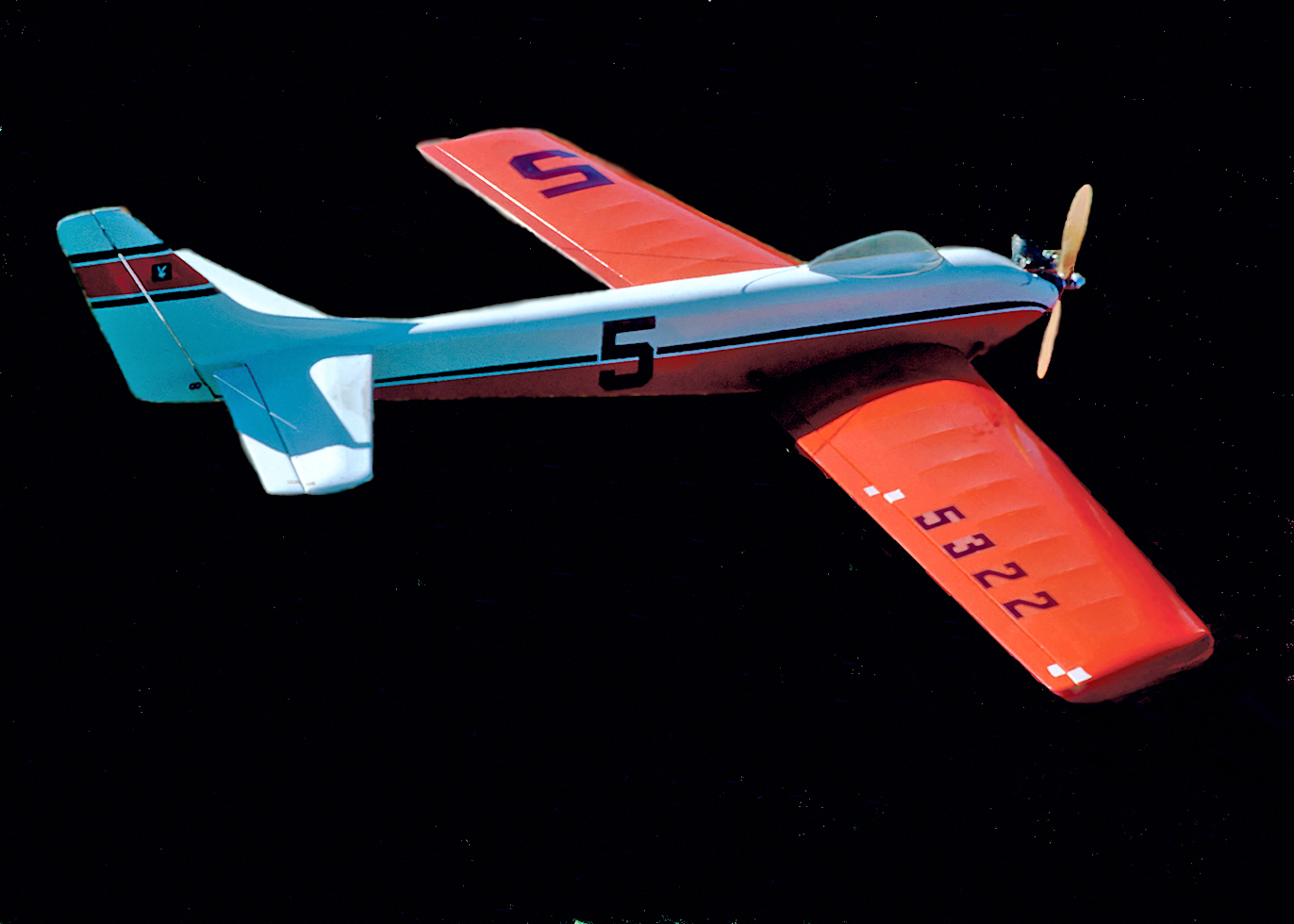
There was constant experimentation in the era of these models. Howard Thombs flew this swept-wing version of the Taurus.
The RCCD hosted a series of Detroit Invitationals (similar to the modern Tournament of Champions events), which was attended by a who’s who of early RC Pattern fliers: Hal deBolt, Ed Kazmirski, Jim Kirkland, Don Lowe, and many others. I was fortunate enough to see the best of vintage RC Pattern firsthand as a young teen; it left an impression on me that still exists to this day.
When I first heard of the VR/CS and SPA I decided to join both for a trial period (the membership dues are reasonable), but at first my involvement was limited to reading newsletters. I considered going to an event or two, but they seemed too far away to get to. However, this year I was more determined, and circumstances allowed me to go to meets hosted by each association.
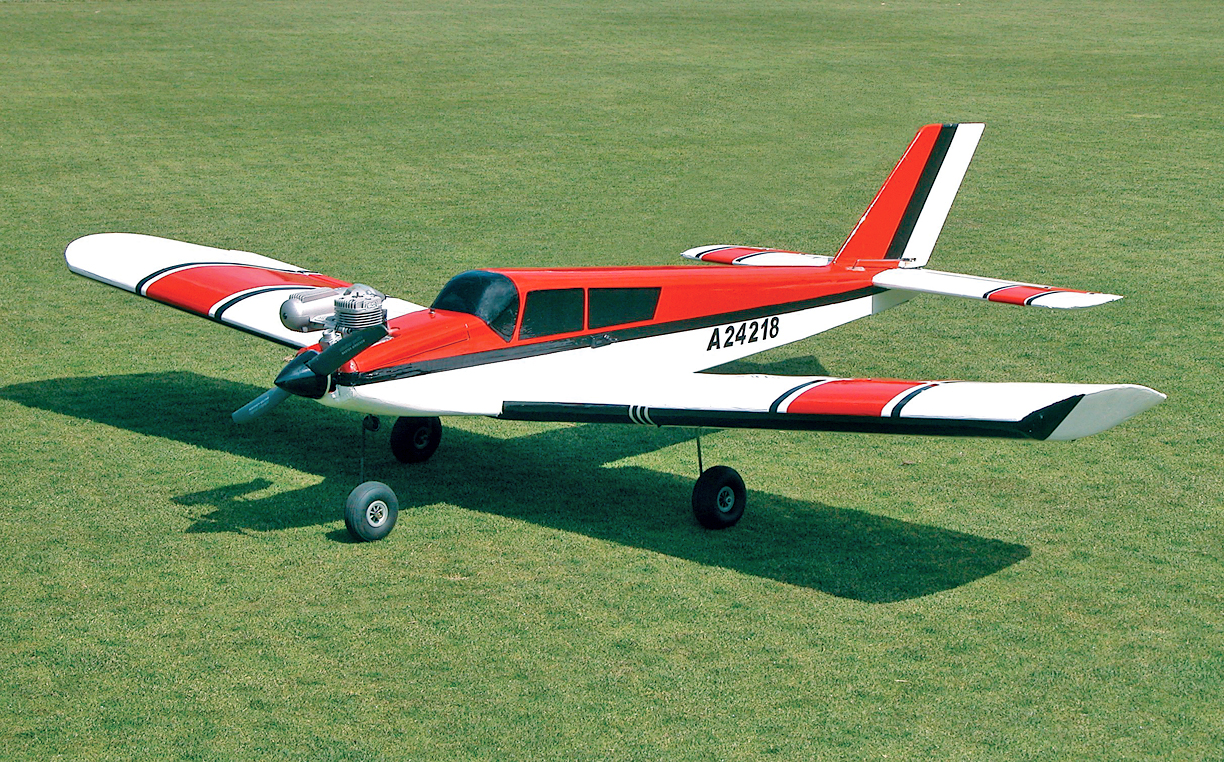
The recognizable VK Cherokee (circa 1965) was a great sport design and Pattern trainer. Wilson photo.
Sure, I was curious to see what each was like, but at the same time I was a bit concerned and wondered what kind of welcome I’d receive. Now I can definitely tell you I’m “hooked on the oldies” and have found my place in RC. It’s not just because of the airplanes themselves but, more important, because of the extraordinary degree of congeniality and camaraderie of both associations.
I was taken aback several times by the extent to which people would go out of their way to help each other, by doing everything from loaning airplanes and equipment to doing repairs—whatever it took to keep others (sometimes competitors) in the air.
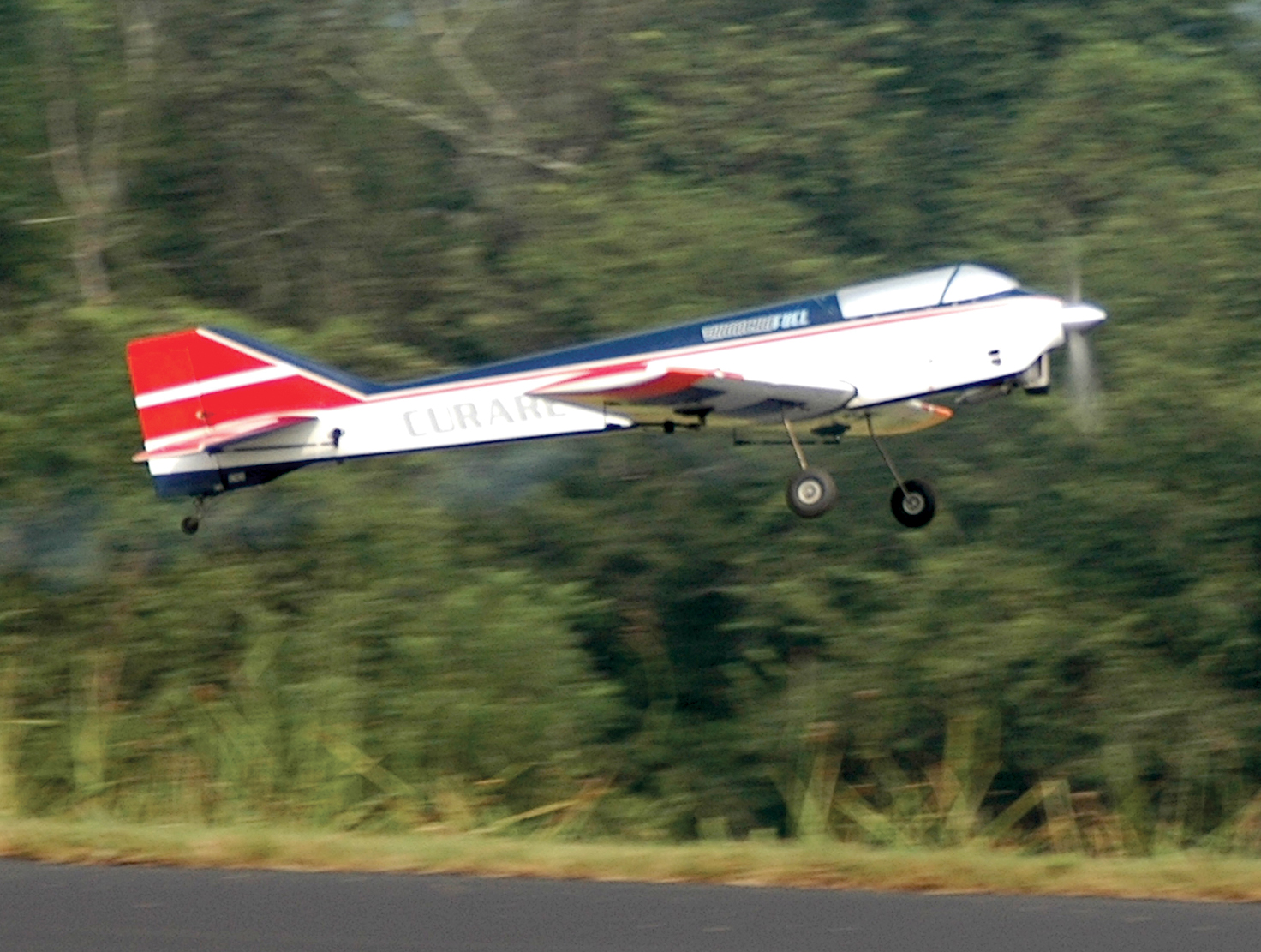
A bit more modern design is Hanno Prettner’s Curare. Steve Byrum built this greatly modified version. Wilson photo.
This kind of helpful attitude is found elsewhere, but it’s actively promoted in these groups and repeatedly seen in abundance everywhere you look. From the leadership down, there is an attitude of placing the individual flier ahead of the event.
After talking about this with another newcomer, I learned that his experience was exactly the same as mine. We agree that these are the most genuine and most inclusive groups of modelers we have ever met. It’s contagious, and you find yourself wanting to be the same way.
The first thought many have of vintage RC is of a bunch of old codgers getting together to relive the past by flying their relics. Nostalgia of some sort does play a part in the attraction of these classic models.
There is no denying a special attachment to a particular design or era of designs. Like car buffs proudly restore and display their classic autos, vintage RCers fly the designs that have a special, personal meaning for them. I was no different.
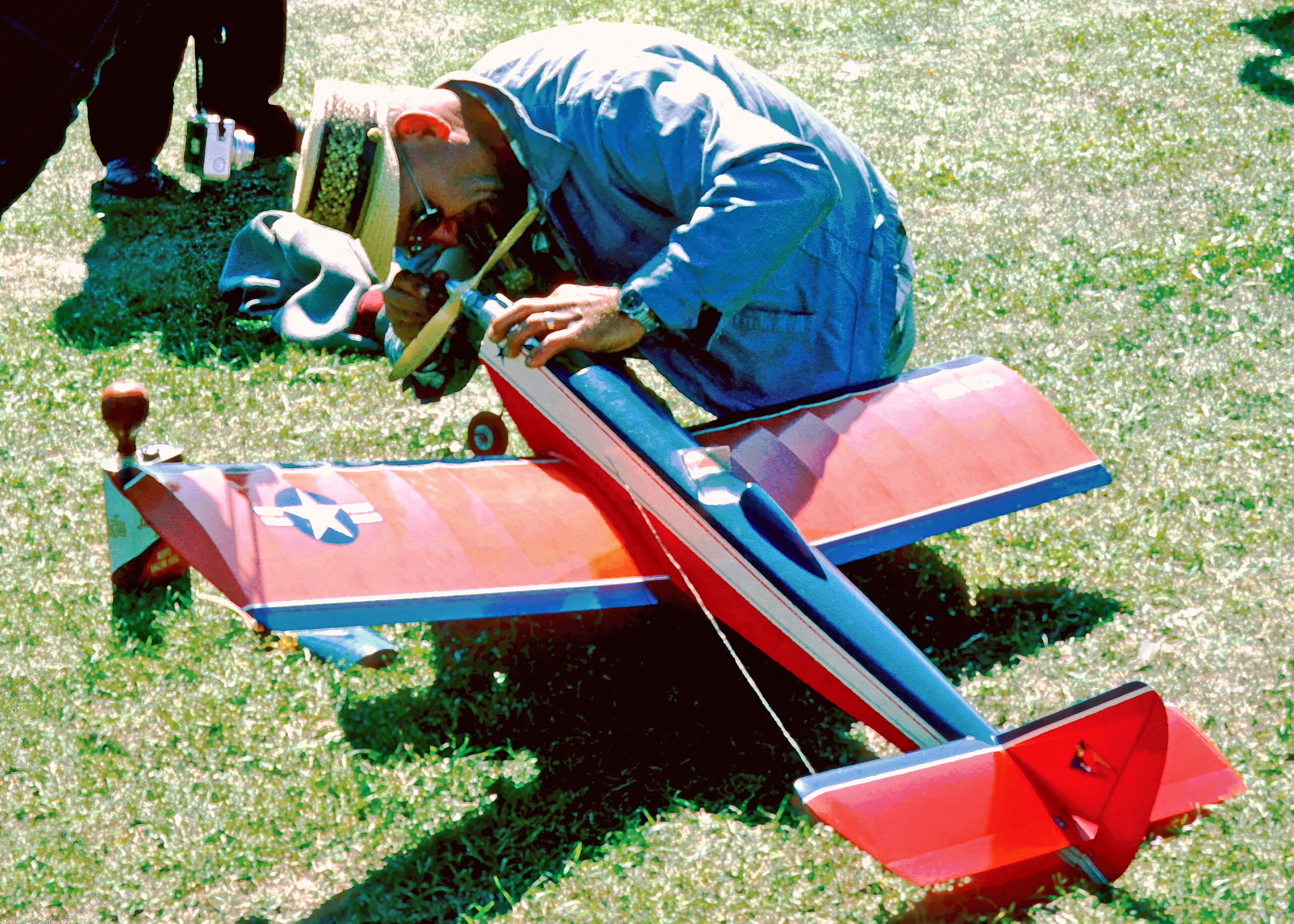
Hal “Pappy” deBolt tinkers with his original-design P-Shooter at a contest in the 1960s.
After my early experience with vintage Pattern, then later competing in AMA Pattern during the mid-1980s, I was away from the hobby for many years. I kept what was left of my models in storage (just in case) and, sure enough, returned to modeling after a 17-year absence.
Almost everything I had was at least 20 years old. It was natural for me to fly the balsa sport and Pattern models I had flown and grown to love; however, I was surprised to learn that in my absence my half-finished Taurus, my almost completed Dirty Birdy, and my previously flown VK Cherokee had become “vintage” designs.
But there’s more to it than nostalgia. To claim that flying vintage aircraft is only about “warm fuzzies” from the past oversimplifies the reasons behind the growing interest in the VR/CS and SPA. Fliers of all ages, not just oldsters, are attending fly-ins and competitions.
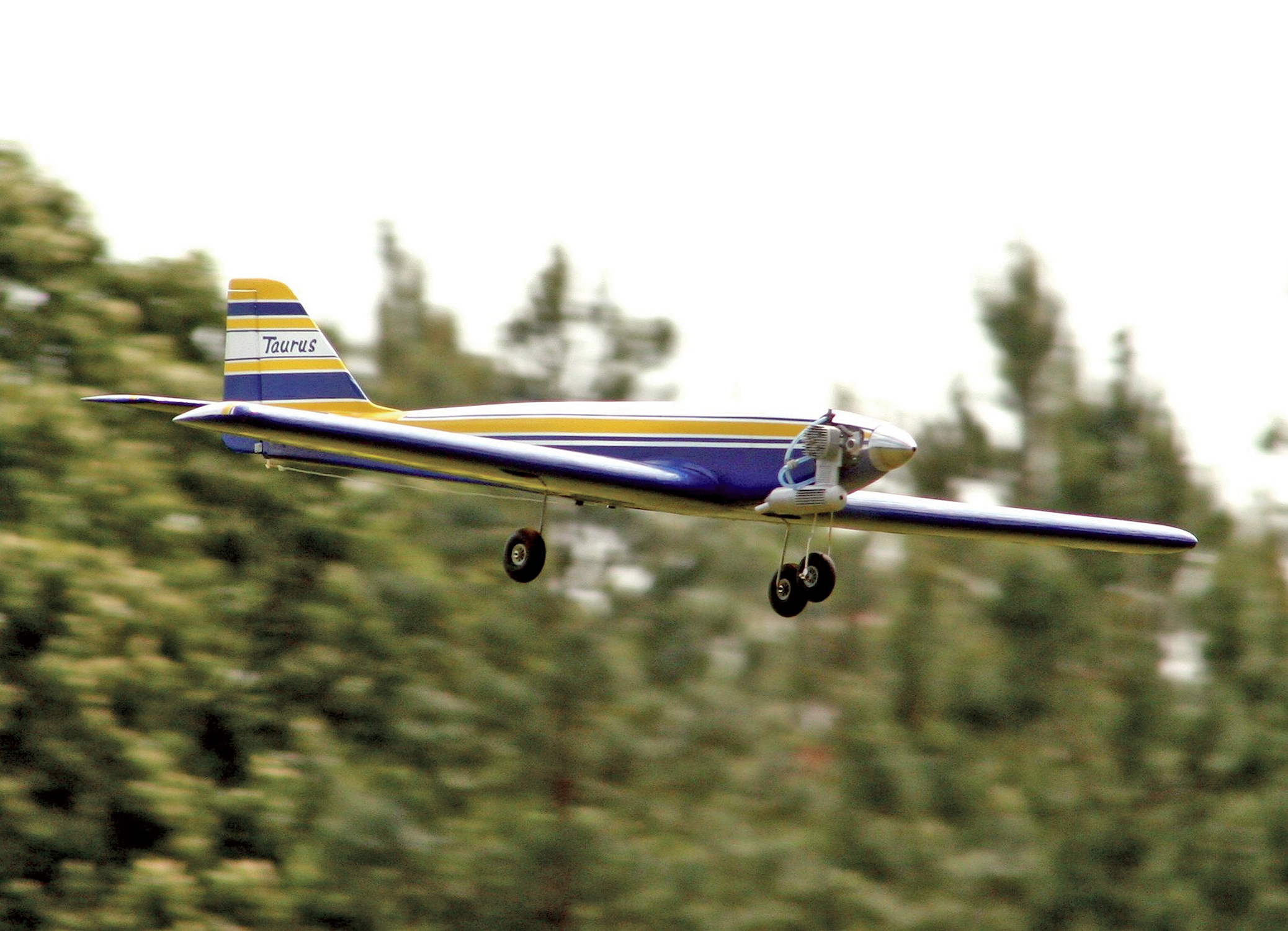
The author’s Taurus on final approach after its second flight. Nice job, Duane! Dick Pettit photo.
What is the attraction—especially since the list of “legal” airplanes makes them all at least 30 years old? Why bother to build and fly 30-plus-year-old model designs when we have all the modern ARFs you see so often at the field? Part of the answer might be because of all the current ARFs.
The long-term trend toward modern ARF designs has been a tremendous benefit to the hobby in terms of convenience, and it allows much more time for flying. The price you pay is a certain lack of individuality.
ARFs have that mass-produced look, with predetermined finishes—take it or leave it. Trends tend to go in cycles; in spite of the ARF’s virtues (especially as a trainer), a segment of modelers has come to the point where it misses the creativity of finishing its own airplanes and wants that custom look at the field.
Even when I’m building an ARF, I find myself changing something in the finish to give it a personal touch. Despite the extra time involved, a certain amount of building can be fun; it’s a good thing to know how to work with balsa and/or fiberglass if for no other reason than to perform repairs.
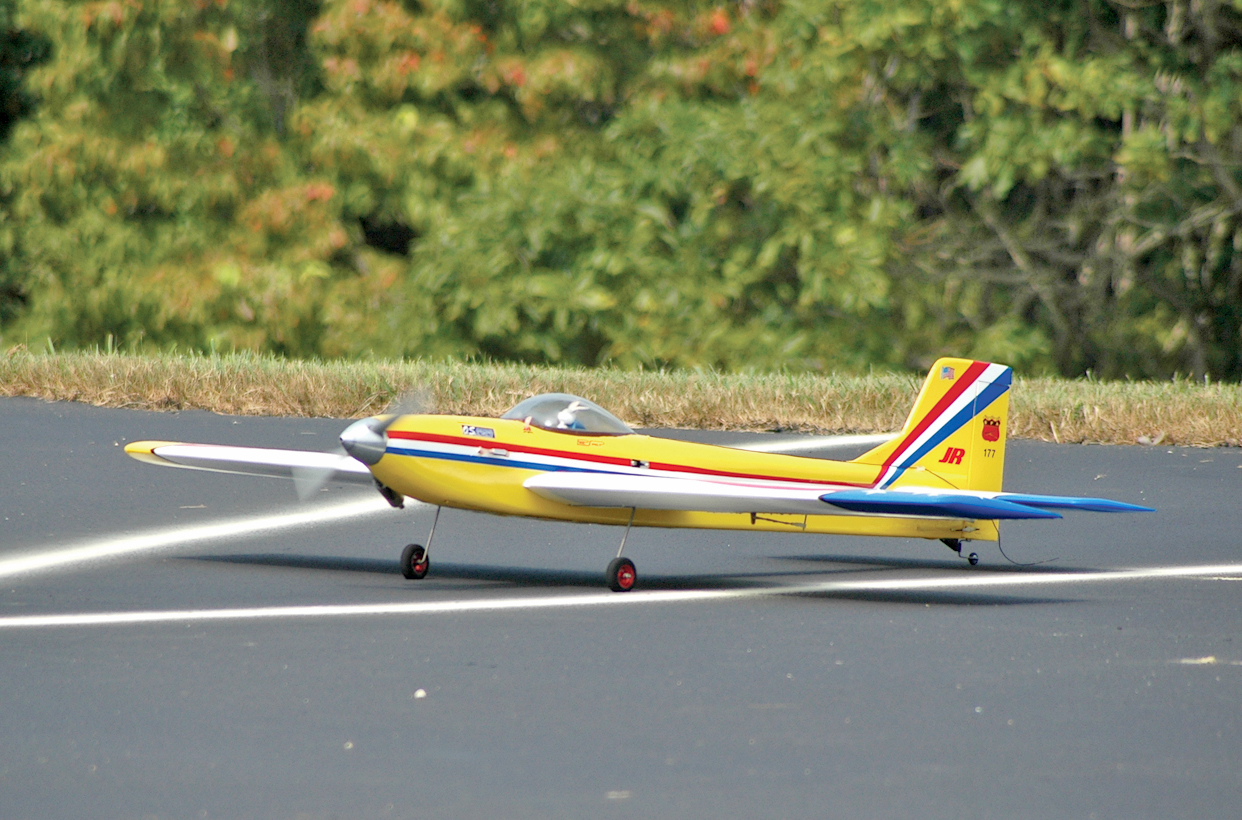
A Jim Whitley-designed Daddy Rabbit taxis back to the pits after a successful mission. This is a popular vintage aerobatics model.
It’s human nature to want originality, and what could be more original nowadays than a vintage model? As strange as it may sound at first, bringing something unique and “new” to the field might sometimes take the form of a proven pedigree design with your own custom finish.
Another attraction is a classic’s reputation as a standout in AMA’s history. There is something special about flying a piece of history at your local field, as Scale pilots have long known.
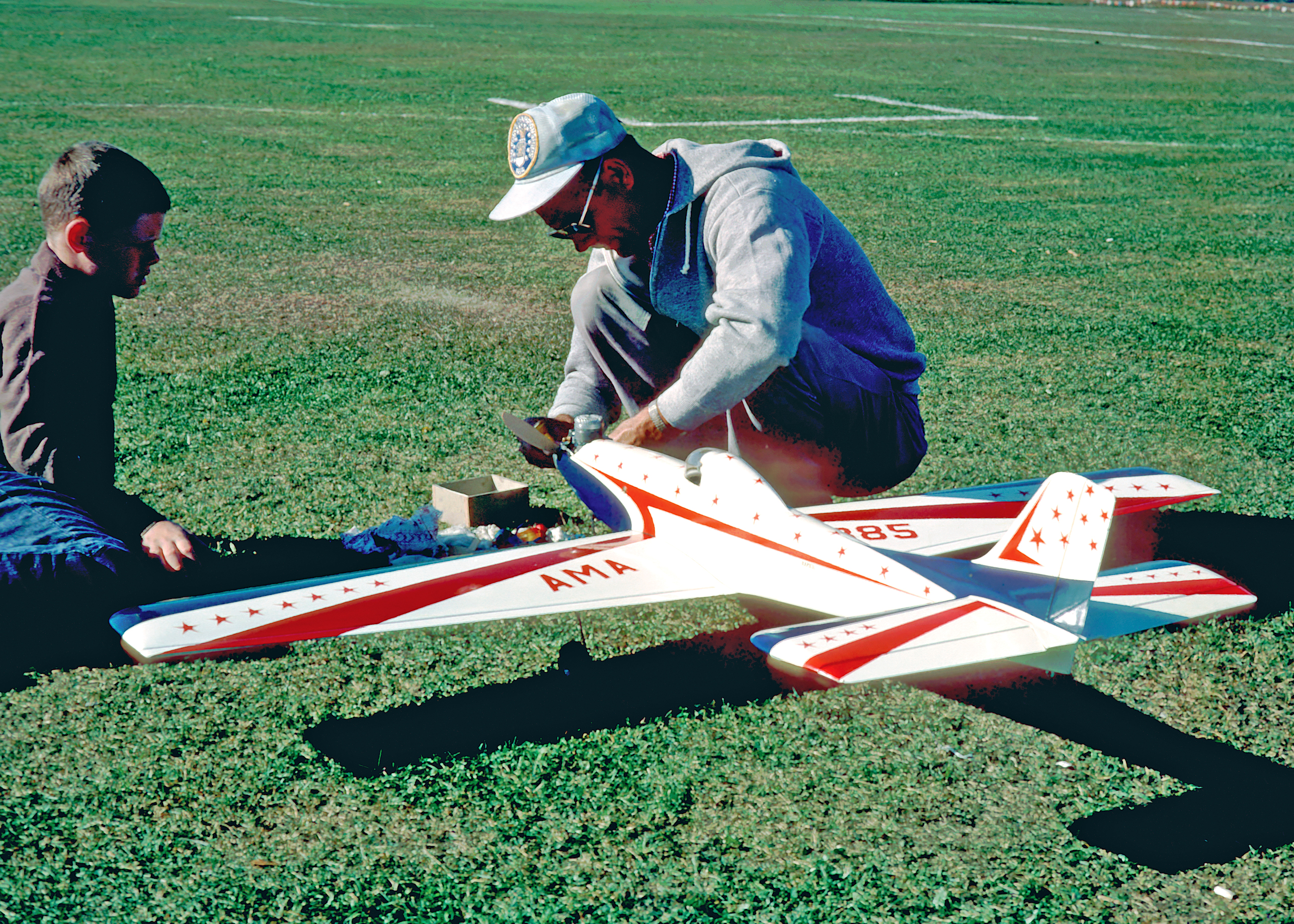
The author is unsure who is shown here, but he thinks it’s Lou Penrod with one of his many original designs.
The best vintage airplanes have their own stories to tell. If you bring a Sr. Falcon (now kitted by several manufacturers) to the field, you know you are flying one of the best-known advanced trainers and sport models in history—and it still looks as good and flies as well as ever.
There are at least two more reasons behind the increasing popularity of these SIGs, the first of which is sharing common interests with others that are not always shared at the local field. The second is fulfilling that drive within some of us for “friendly” competition to perfect our piloting skills through the discipline of practice.
VR/CS—Preserving RC as It Was: As with classic-car clubs, it’s easy to see why classic modelairplane clubs develop, attracting RC history buffs from across the country and overseas. With the entire time span of RC modeling up to 1970 to choose from, a VR/CS member will find a time period and a type of aircraft to fit his or her interests. The choice of finishing materials is anything from familiar iron-on coverings to learning all the old silk-and-dope covering methods. It’s up to you.
Bill Winter, in association with RC modeling pioneer Hal “Pappy” deBolt and others, formed the VR/CS in 1989. Their stated primary objective was:
“ … to preserve and promote the memory of radio control aero-modeling activity as it was … there is no desire to advance the state-of the-art of aero-modeling, nor rewrite what is recorded in aeromodeling history. The flying of vintage radio control aircraft is intended to be casual, enjoyable, and interesting for everyone involved.”
The thinking behind the VR/CS was not limited to a tell-it-like-it-was philosophy alone but also includes “… the idea of annual get-togethers … the theme would be ‘fly and tell,’ featuring demonstrations by prominent RCers flying original or replica models of vintage RC designs.”
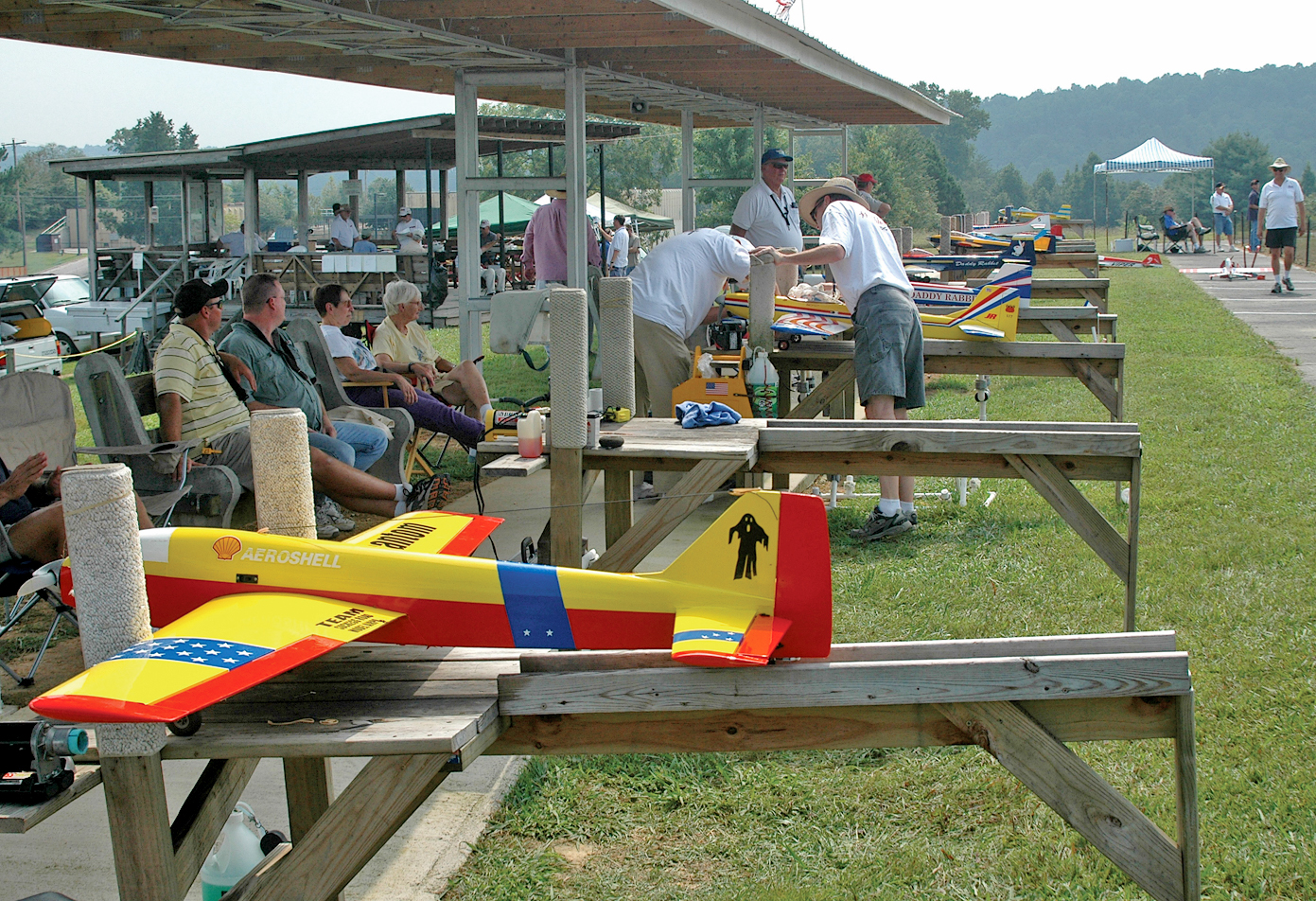
This appears to be a Phantom—not to be confused with the Phantom series as used by 1965 US Pattern team member Zel Ritchie.
The VR/CS is interested in all aspects of historical RC and all types of RC aircraft designs. Walking down the flightline and observing the variety of models is like looking at a flying museum of RC.
You are likely to see all sizes, ages of design, and control-surface configurations, from single-channel rudder only to what was called, at the time of reed systems, “full-house, multichannel” (the type of airplane we take for granted now, with aileron, elevator, throttle, and rudder). You can never be sure what aircraft will be displayed and flown at a fly-in, or “reunion.”
In addition to the usual draw of flying, seeing others fly, and sharing stories and information, reunions offer several competition options, depending on the model category. There are four flying categories: Open, Concours (as authentic a replication of a vintage RC model as possible, down to original covering materials and techniques), Pattern, and Scale. Each requires different levels of authenticity, based on the original design.
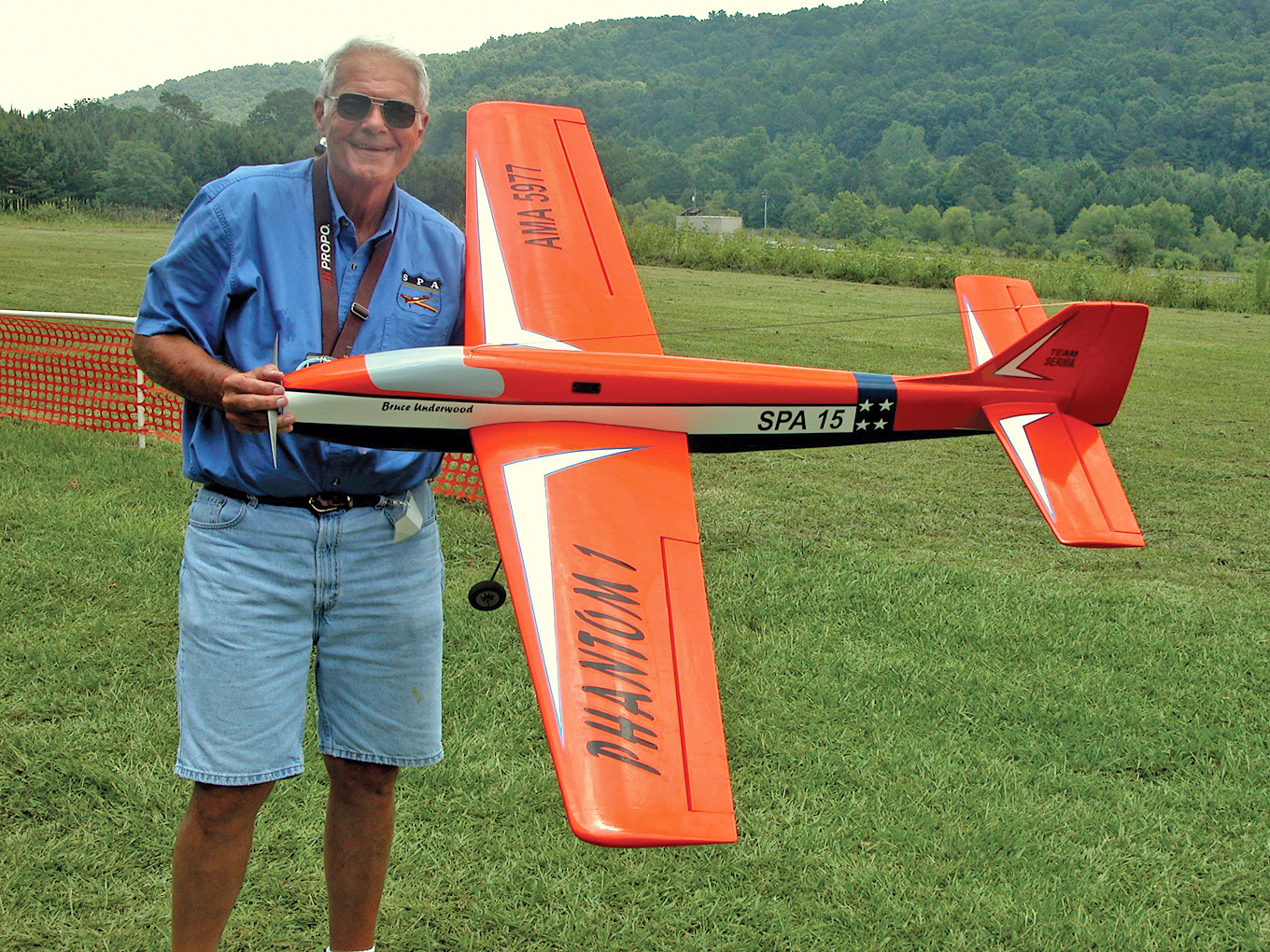
Senior Pattern Association President Bruce Underwood shows off his colorful Phantom 1. Wilson photo.
Most categories require the model to be originally designed for RC and be built to the original “planform,” or outline, of the design. Engine size is limited to a .61 two-stroke or .91 four-stroke, with provisions made for models with electric conversions.
A VR/CS gathering is like an extended family reunion, where you get together with modelers from many states and Canada to fly vintage RC. There is an automatic bond formed with every other flier there. A significant number of wives (they used to be affectionately known as “RC Widows”) make the pilgrimage with their husbands and form their own bonds.
The VR/CS’s interests are not limited to vintage airplanes. They extend to engines and radios, thus the VR/CS encourages the collection and restoration of original, historic RC equipment. While promoting an active interest in collecting, restoring, and flying 30- to 40-year-old gear, the VR/CS encourages the use of modern engines and radios for safety reasons.
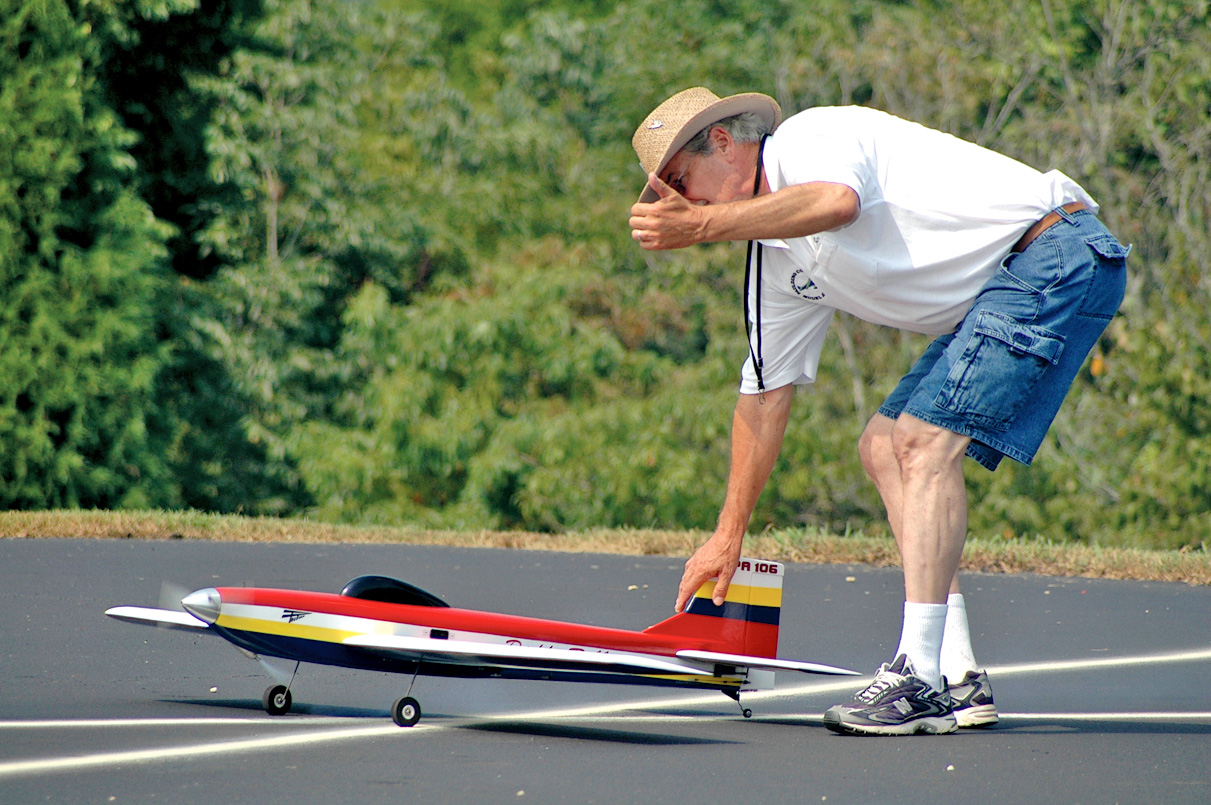
An unidentified helper gives his pilot the thumbs-up before leaving his model at the edge of the runway.
During the early years of RC, losing models for all kinds of reasons was heartbreaking, but it was routine and accepted as part of the hobby. As happened frequently then, engines quit at the most inopportune time and radios were, shall we say, less than reliable.
It was common to see some poor soul raise his transmitter over his head while running across the field toward the model (in a vain attempt to get closer to it), crying “I’ve lost it,” while others jumped into a caravan of cars to chase the airplane before it flew out of sight. Although modern radios are the norm at VR/CS meets, you will see original equipment (early analog proportional rigs, reed systems, and possibly even escapements, or “galloping ghosts”) demonstrated.
An unnatural way to fly by modern standards (or even in the late 1960s), the preproportional reed systems represented the first major advance in aircraft control. The first Nats and World Championships were flown on reeds. The pilot would “blip” toggle switches (one for each control surface) up and down or side to side to get the desired control response and flight path.
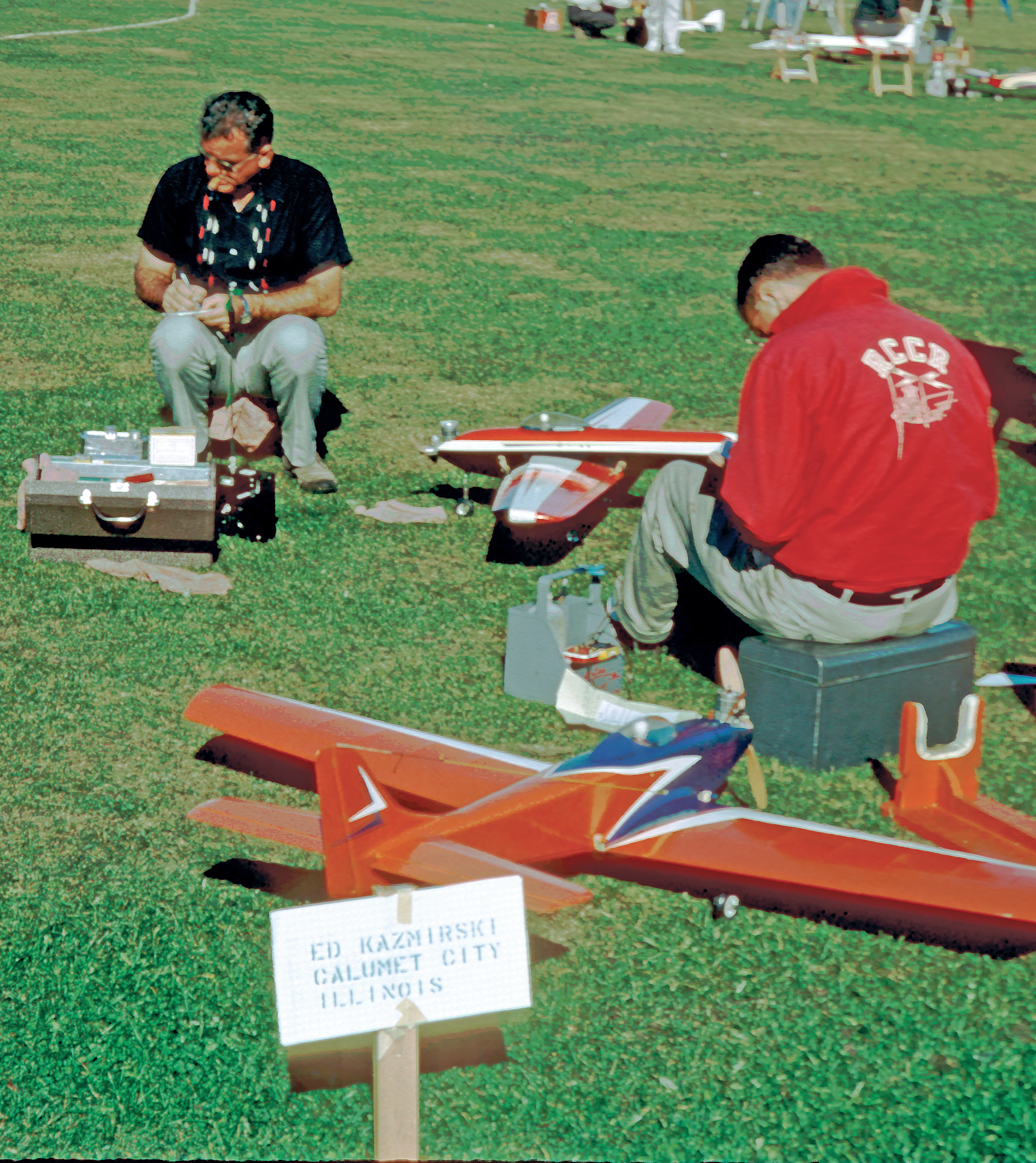
The legendary Ed Kazmirski (in the black shirt) prepares his taper-wing version of the Taurus for flight.
Flying reeds was nothing like flying a full-scale airplane, but the result (the path the model took in the air) was what mattered. Seeing a VR/CS pilot fly reeds as in the old days gives you added respect for the pioneers of Pattern flying, in that they could so skillfully fly Aerobatics with them. Some reed pilots were so accomplished with that system that they were hesitant to convert to proportional control, even when it came of age.
SPA—Vintage Competition While Keeping It Simple: While promoting RC history, as the VR/CS does, the SPA is primarily interested in RC Pattern competition “…as it was in the good old days,” as the Web page says.
The “good old days” (meaning when things were simple, fun, and inexpensive) are defined as the 1960s and early 1970s, before the pressure for a competitive edge meant pilots had to buy increasingly expensive, high-performance gear to remain competitive.
SPA founder Mickey Walker missed the fun, the fellowship, and the challenge that only competition can produce. Pattern models have always been designed with serious competition in mind.
However, if left to ourselves, most of us wouldn’t burn gallons of fuel practicing Aerobatics to be the best we could be without competition. The incentive of the contest gives us the discipline that results in better flying skills in the end. You know you’ll be putting those skills to the test in front of the judges.
To understand SPA, you have to examine the history of AMA Pattern. Technology of the earliest Pattern designs, of the early 1960s, such as the Taurus or Perigee was almost primitive by modern standards.
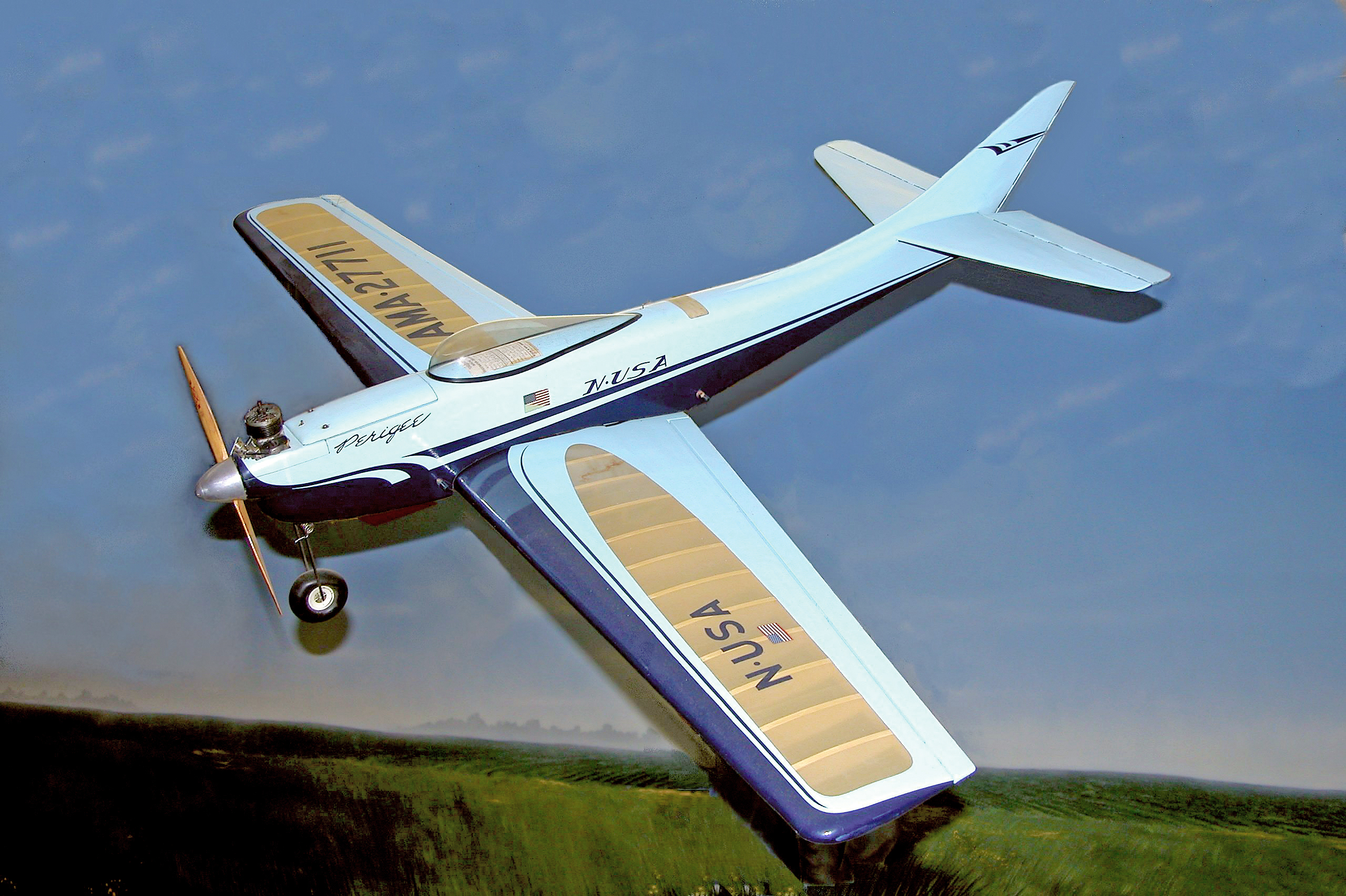
Among the most elegant early Pattern designs was Tom Brett’s vintage 1962 Perigee. This one now resides in the AMA museum. Wilson photo.
Original plans showed control surfaces hinged by sewing them on with nylon line. Everybody—Nats and World Champions down to the rest of us—used simple dowels and rubber bands to hold the wings on. There was only a small technology gap between average fliers at the local field and the world’s best.
Because of large, bulky servos and less powerful engines, the emphasis was placed on building light. There were no retracts or tuned pipes, even at the highest levels of competition. Flightlines at local fields were filled with trainers and Pattern designs, which naturally led to the tremendous popularity of Pattern contests.
As technology advanced as a result of rapid growth during the 1960s, designs quickly changed to keep pace with new innovations and rules changes. By the mid- to late 1960s, technology had progressed to the point where a new standard of high performance engines, more reliable proportional radio equipment, and a large variety of high-performance designs were there from which to choose.
Many call this era—the mid-1960s to the mid-1970s—the “golden age” of Pattern. Yet a competitive aircraft was still simple, affordable, and within the average modeler’s reach.
Although modelers welcomed increased reliability and performance improvements, things began to change by the mid- to late 1970s and certainly by the 1980s. There was a developing expectation among competitors to present to the judges (usually each other) in a certain way (fast, large, and with your “feet up”).
To be truly competitive, especially in the upper classes, there was competitive pressure toward even higher-performance (meaning higher-priced) engines and airplanes. Anyone who progressed out of Novice (i.e., most Pattern pilots) faced more expenses if they were to continue to compete.
You had to ask yourself how competitive you wanted to be and whether or not you were willing to pay for the best engines and latest model designs. Those who didn’t were often outperformed by those who did.
Retracts made an additional contribution to the total investment and complexity needed to compete. However, to attract new competitors to Aerobatics the opposite was true. Tuned pipes and retracts were purposely disallowed in the entry-level Novice class (a fact not lost on SPA rule-makers).
RC Pattern was originally the only aerobatics game in town. Today the event has branched out into many other forms of aerobatics, each of which is also high tech and requires a major economic investment.
So what alternatives are available for Sunday fliers who are interested in aerobatics and want to find an organized outlet for friendly (but serious) competition? Many are discovering SPA and many more would be interested if there were events in their areas.
When Mickey Walker and his friends got together to form the SPA in 1991, they were aware of the shortcomings they observed in traditional AMA Pattern. They believed that it had strayed from its early roots and left the average competitor behind. The group made a conscious decision to return to Pattern’s “golden age” by eliminating all nonessentials (such as AMA’s Novice class) but extending this rule to all classes, from Novice to Expert.
The SPA-legal models and maneuvers were chosen to be those in existence before the 1976 cutoff date. However, to allow more flexibility and give interested newcomers the opportunity to “test the waters,” any model could be used at the Novice level. The legal airplane list would take effect only when members moved on to higher classes.
These decisions had the deliberate effect of “putting the brakes on” technology. The emphasis shifted from a combination of flying skill and the latest equipment to just the pilot’s skill and hard work. Flying is still extremely competitive—but friendly (those two terms can be used in the same sentence).
An unexpected twist was added to the rules in 1998, when one of the primary host clubs for SPA events passed a noise rule in response to AMA’s leadership’s urging. Many clubs across the country were losing their flying sites because of noise complaints and others would eventually face the same dilemma.
The SPA membership voting on new rules changes that day faced a hard choice; either SPA was going to find a way to make things quieter or possibly lose that beautiful site someday. In the end they could see what was in the future for RC, and they made the decision to allow modern four-stroke engines as large as .91s without supercharging.
It didn’t take too long to see that four strokes outperformed the .61 two-strokes by being able to provide vertical performance that was essentially equal to that of a good piped .61. What started as a sacrifice and a compromise to cut noise and keep a great contest site turned into a performance advantage.
Most pilots have since converted to the four-strokes, although two-strokes are still legal as long as contestants meet the noise standard. Few who initially voted against four-strokes would want to go back to the way things were.
The VR/CS also allows four-strokes for the same reason, and both groups welcome the current move in the direction of electric powered flight. It remains to be seen how much evolution will take place because of electric motors.
The State of Vintage RC: Just a few years ago most vintage designs were nonexistent in kit form. The only method of building was by ordering plans from magazines or AMA and the time-consuming labor of love called “scratch building,” which might take months, depending on the model’s size and complexity.
Now, because of increased demand for vintage kits, a rapidly growing variety of high-quality, laser-cut balsa kits and fiberglass Pattern designs are being produced, and others are about to be released. (See the sidebar for information.) These are being offered not only by traditional manufacturers but by a host of small businesses led by talented modelers.
A good barometer of how national interest is growing is Web pages that RC enthusiasts visit. An excellent site is RC Universe at www.rcuniverse.com. In addition to being a marketplace for buying and selling airplanes and equipment, RCU and other sites sponsor user-friendly “forums” where modelers can ask questions and discuss almost every conceivable interest within the hobby.
The longstanding forum devoted to vintage RC was recently joined by a new forum added under the heading of RC Pattern. This was done in direct response to popular demand for a “classic Pattern” forum (all Pattern designs prior to the rules change in 1996 which allowed unlimited-power, 2-meter aircraft specifically designed for Turnaround Pattern).
This includes vintage Pattern and the later high-performance airplanes with pipes and retracts. There are many discussion threads of interest to SPA members and prospective members. Give these forums a try.
The VR/CS has members in 46 states and three foreign countries. Just since 2002 the number of its sponsored events has increased from three to seven, with fly-ins and reunions in several states, including an annual event at AMA Headquarters in Muncie, Indiana.
The largest get-together and highlight of the season is the annual Spirit of Selinsgrove Reunion (named after the site of its first event held at Selinsgrove, Pennsylvania, in 1990). The reunion has been relocated several times and is now held in Endicott, New York, Labor Day weekend.
Although most gatherings are currently held in the east, there is a new fly-in near Denver, Colorado, with the possibility of more events in the west. New chapters in North Carolina and Colorado are part of the reason for more sanctioned events. Additional chapters are welcomed, and the Web site includes information about how new chapters should be formed.
The SPA is more regional in nature, with an active group of competitors living primarily in the Southeast. There are currently chapters in Alabama, Tennessee, Georgia, and the newest in Virginia. As with VR/CS, as new chapters form, more people are able to attend SPA Pattern events.
To learn more about the VR/CS or SPA, the first place to go is each SIG’s excellent Web site: www.seniorpattern.com and www.vintagercsociety.org. Both associations are actively seeking new members.
Growth results from interest at the local level; to get things going, all you need is a small group of pilots who enjoys vintage flying. There is no reason why SPA or VR/CS events can’t be hosted anywhere in the country by having local groups work closely with national leadership. Try something different from the routine fun-fly by having your local club sponsor an SPA competition or a VR/CS fly-in.
The best of RC’s past is making a comeback, so get involved and give vintage a try. The reasons for the appeal of these aircraft to the modelers of today are as varied and individual as the designs themselves. Whatever the reason, it’s a blast to fly these designs again—or for the first time. I’ll see you at a meet. MA
Sources for Vintage Models
Bridi Airplanes
Singapore Hobby Supplies
Tower Hobbies
AMA Plans Service
Model Airplane News







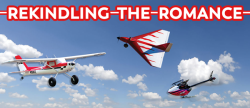
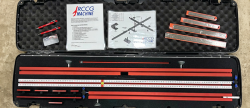
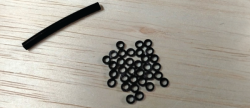
Add new comment